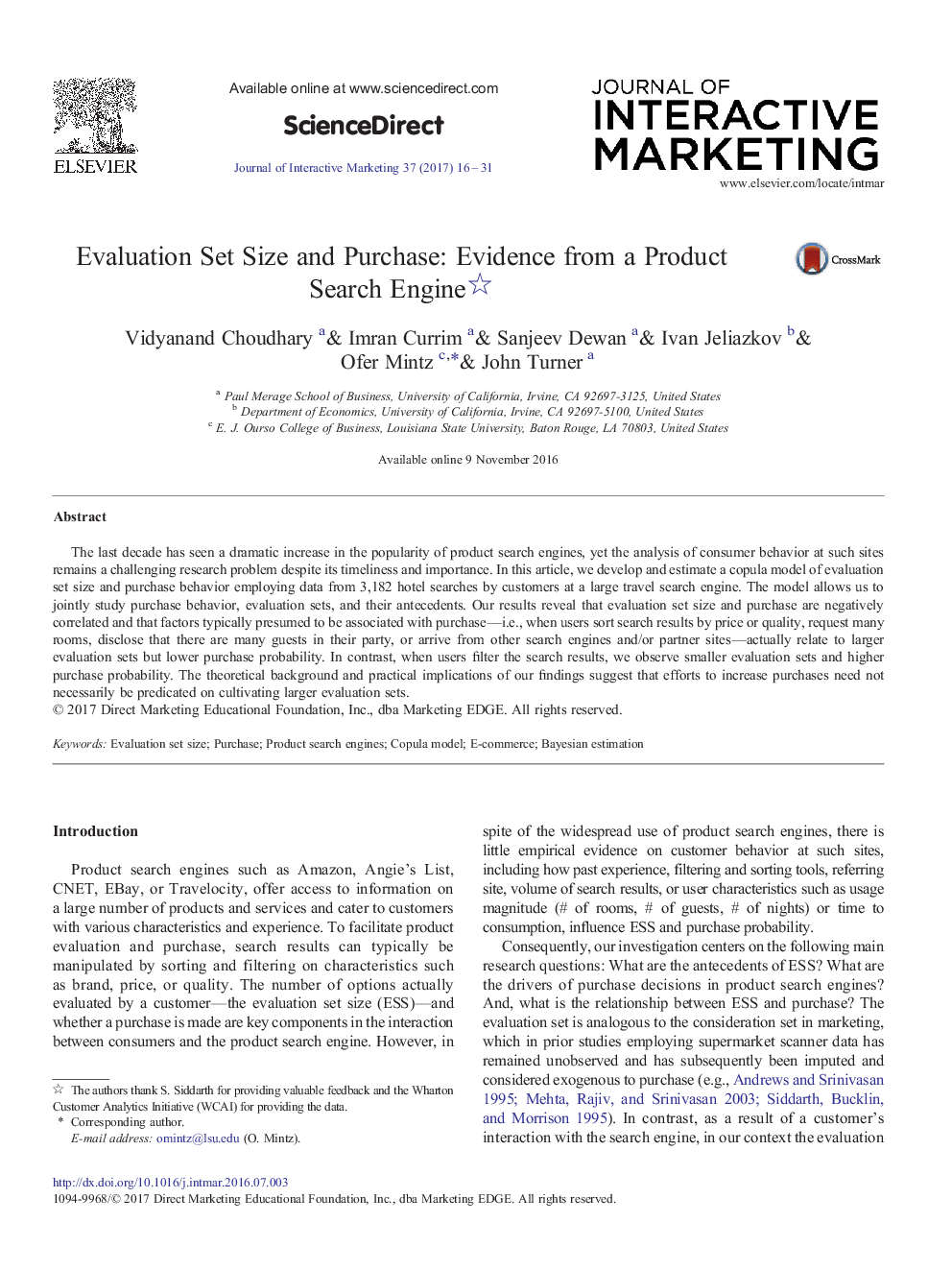| Article ID | Journal | Published Year | Pages | File Type |
|---|---|---|---|---|
| 5034989 | Journal of Interactive Marketing | 2017 | 16 Pages |
â¢A conceptual model of antecedents and consequences of evaluation set size (ESS) is proposedâ¢The conceptual model integrates search cost, information, two-stage, context effects, and consumer behavior theoriesâ¢A copula model employing data from hotel searches is developed and estimatedâ¢Results find larger ESS for users who sort and arrive from other product search engines; smaller ESS for users who filterâ¢Results also find that ESS and purchase decisions are negatively related
The last decade has seen a dramatic increase in the popularity of product search engines, yet the analysis of consumer behavior at such sites remains a challenging research problem despite its timeliness and importance. In this article, we develop and estimate a copula model of evaluation set size and purchase behavior employing data from 3,182 hotel searches by customers at a large travel search engine. The model allows us to jointly study purchase behavior, evaluation sets, and their antecedents. Our results reveal that evaluation set size and purchase are negatively correlated and that factors typically presumed to be associated with purchase-i.e., when users sort search results by price or quality, request many rooms, disclose that there are many guests in their party, or arrive from other search engines and/or partner sites-actually relate to larger evaluation sets but lower purchase probability. In contrast, when users filter the search results, we observe smaller evaluation sets and higher purchase probability. The theoretical background and practical implications of our findings suggest that efforts to increase purchases need not necessarily be predicated on cultivating larger evaluation sets.
